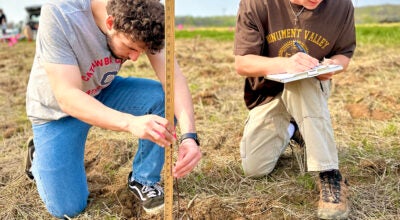Rebecca Rider column: On education and guns
Published 12:00 am Thursday, January 7, 2016
One of the best pieces of writing advice I received in school was “write from your seat.” It means write about what you know — write about the world as you see it.
Yesterday the president created executive actions requiring gun sellers to be licensed and to conduct background checks on all buyers. I’d love to write about the ways this could alter the nation’s perception of the second amendment or how it affects the rights of gun owners, but alas, I don’t own a gun. That’s not my seat. And to every gun owner who gets up in arms about second amendment rights whenever there is a school shooting I say, sit down, that’s not your seat. It’s mine.
When we talk about school shootings we use words like “tragedy” and “massacre” and “killing spree” and “rampage” — words that should never be associated with a school. With education. But these are the words I grew up with, and this is the fear I lived with as a student.
Columbine happened while I was still in elementary school. I’m sure we must have had lockdown drills before 1999, but I only remember the ones that came after it — because then the fear was real. We would sit silently in the classrooms, gathered into a corner with the lights off, waiting. We were asked to pretend it was real. I remember the sudden jump of adrenaline when the principal rattled the door handle, asking to be let in. They would plead, or try to persuade us. They’d sound afraid. But we were told beforehand that anyone who needed to get into the room would have a key, so no one moved. We sat frozen in place.
In high school, I dealt with two supposed gun threats and two bomb threats. All of them turned out to be fake, but that didn’t come out till later. We had to act as if it was real.
One day, I left fifth period to find teachers guarding the hallways. Don’t go to your lockers, head downstairs. Get outside. Be fast and be quiet. The entire school pushed down the narrow stairways and spilled out onto the lawn. Back up, get as far away from the building as possible. Our administrator never made an announcement, but the rumors spread anyway. They sorted us by classes and pushed us to the far end of the lawn. I watched the fire trucks pull up, I watched the bomb squad go inside.
We all dealt with the uncertainty in our own ways. I took a nap. A few feet away from me, the Senior AP English teacher gathered his class around, handed out worksheets and continued teaching as though nothing had happened.
After I earned my associate degree at RCCC in 2011, I took a semester off to attend a class offered by a theological school. The campus I went to was in Denver, just down the road from Littleton, Colorado. The memory of Columbine still lingered there, but my school had its own tragedy.
On a snowy night in December, 2007, just after the school’s Christmas banquet, a former student came on campus and shot four staff members who refused to let him in the building. Two of them died. Police determined later that he’d planned to kill all the students who were, at the time, sleeping peacefully in their beds. They said “massacre.”
One of my teachers that semester lost her best friend in that shooting, and had been in the same class as the shooter not five years before. She cried as she talked about the importance of forgiveness. For five months, I had to live with the knowledge that violence had happened there — in the door I walked through every day, in the building where I had classes, and slept. I had to live with the knowledge that it could happen again, and it shadowed everything.
Fear should never be a factor in education. School is supposed to be a place of learning, and for many students it’s a place of safety. That’s a fragile thing that should never be threatened with violence. I appreciate the president’s actions, but when it comes to stopping school shootings — when it comes to ensuring that students can learn in innocence and confidence, free from fear — let’s be frank: it’s not enough.


